Boswellia serrata
Boswellia serrata
1. The products in our compound library are selected from thousands of unique natural products; 2. It has the characteristics of diverse structure, diverse sources and wide coverage of activities; 3. Provide information on the activity of products from major journals, patents and research reports around the world, providing theoretical direction and research basis for further research and screening; 4. Free combination according to the type, source, target and disease of natural product; 5. The compound powder is placed in a covered tube and then discharged into a 10 x 10 cryostat; 6. Transport in ice pack or dry ice pack. Please store it at -20 °C as soon as possible after receiving the product, and use it as soon as possible after opening.
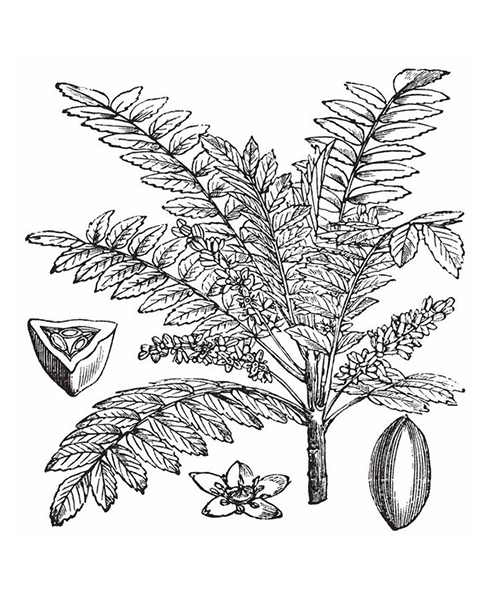
Natural products/compounds from Boswellia serrata
- Cat.No. Product Name CAS Number COA
-
BCN8303
Acetic acid octyl ester112-14-1
Instructions
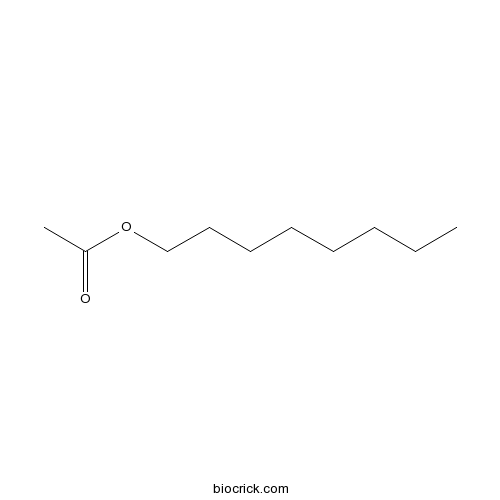
-
BCN8694
3-O-Acetyl-11-hydroxy-beta-boswellic acid146019-25-2
Instructions

-
BCN2298
11-Keto-beta-boswellic acid17019-92-0
Instructions
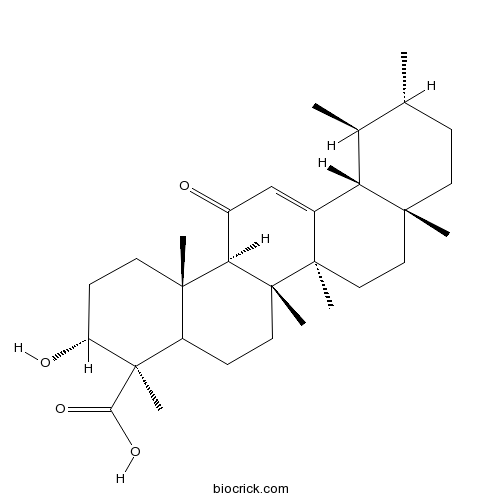
-
BCN2980
Tsugaric acid A174391-64-1
Instructions
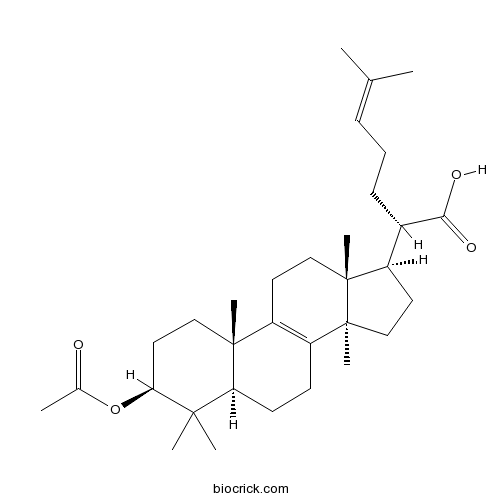
-
BCN3831
Incensole22419-74-5
Instructions
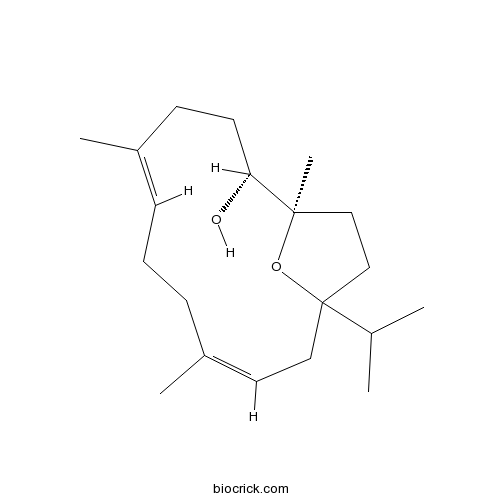
-
BCN2981
Beta-Elemonic acid28282-25-9
Instructions

-
BCN3830
Incensole acetate34701-53-6
Instructions
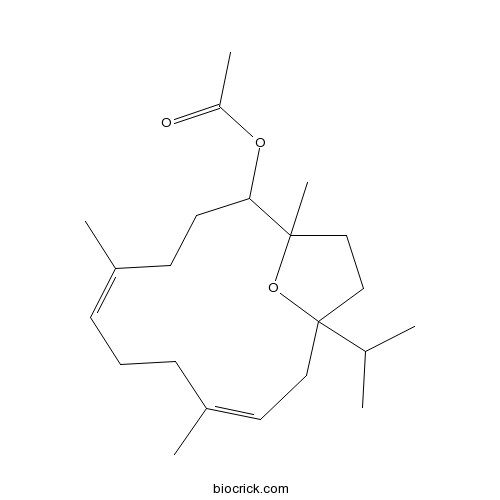
-
BCN5522
alpha-Boswellic acid471-66-9
Instructions
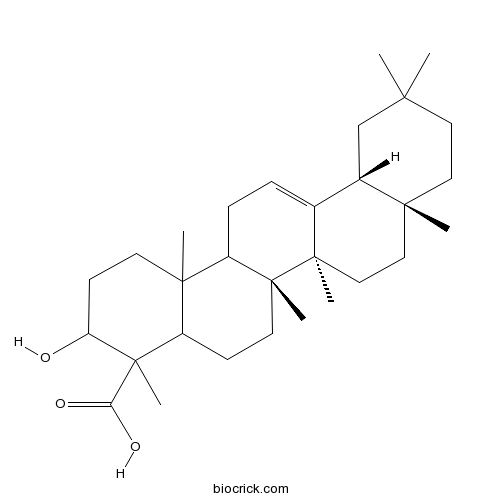
-
BCN8647
Nephthenol53915-41-6
Instructions
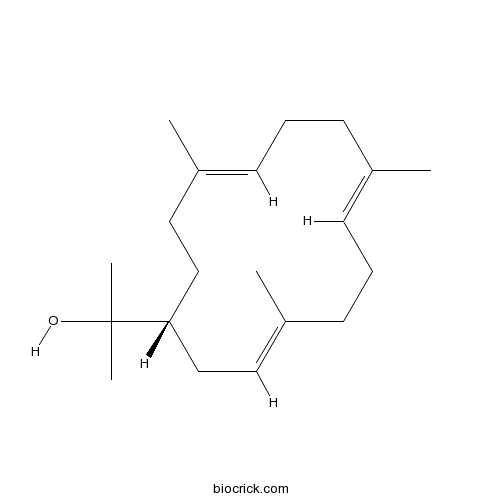
-
BCN2672
3-O-Acetyl-beta-boswellic acid5968-70-7
Instructions

-
BCN2367
Beta-boswellic acid631-69-6
Instructions
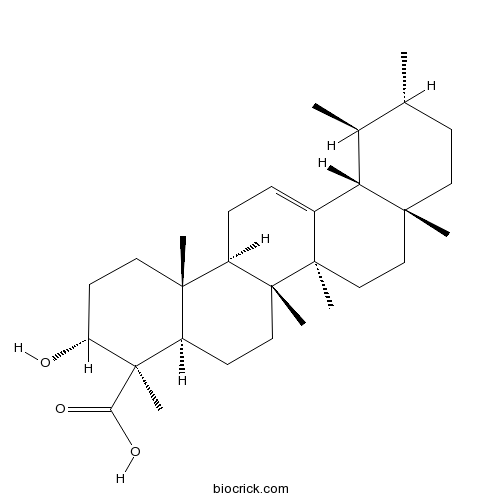
-
BCN1381
3-O-Acetyl-11-keto-beta-boswellic acid67416-61-9
Instructions

Inhibition of adiposity and related metabolic disturbances by polyphenol-rich extract of Boswellia serrata gum through alteration of adipo/cytokine profiles.[Pubmed: 30069718]
The role of proinflammatory cytokines in adiposity is well established. The anti-inflammatory and antihyperglycemia effects of Boswellia serrata (B. Serrata) gum have been demonstrated by many investigators. The present study aimed to investigate the anti-obesity potential of B. serrata extract.
Sustainable supply, a foundation for natural product development: The case of Indian frankincense (Boswellia serrata Roxb. ex Colebr.).[Pubmed: 30031142]
Boswellia serrata Roxb. ex Colebr. is a multiple-use tree species used for fodder, timber and is tapped for an oleo-resin known internationally as Indian frankincense or Indian olibanum. The main commercial uses of B. serrata oleo-resin are medicinal, religious, and in cosmetics and perfumery. B. serrata, like other frankincense species, is an important source of boswellic acid used in the pharmaceutical industry. India is the only producer of B. serrata oleo-resin, mainly from the states of Madhya Pradesh, Andhra Pradesh, Gujarat and Jharkhand. Market demands, harvesting and managing practices have pressured Indian frankincense populations into imminent decline and start to affect populations of African frankincense as buyers turn to look for substitutions.
L-Methionine associated with Hibiscus sabdariffa and Boswellia serrata extracts are not inferior to antibiotic treatment for symptoms relief in patients affected by recurrent uncomplicated urinary tract infections: Focus on antibiotic-sparing approach.[Pubmed: 29974725]
To evaluate the efficacy of a phytotherapic combination of L-Methionine associated with Hibiscus sabdariffa and Boswellia serrata for treatment of acute episodes of uncomplicated urinary tract infections (UTI) in women affected by recurrent UTIs.
3-O-acetyl-11-keto-β-boswellic acid exerts anti-tumor effects in glioblastoma by arresting cell cycle at G2/M phase.[Pubmed: 29970196]
Glioblastoma (GBM) is the most common, malignant, and lethal primary brain tumor in adults accounting for about 50% of all gliomas. Up to now, the chemotherapy approaches for GBM were limited. 3-O-acetyl-11-keto-β-boswellic acid (AKBA), the major active ingredient of the gum resin from Boswellia serrata and Boswellia carteri Birdw., was reported to inhibit the growth of many types of cancer cells; however, the underlying mechanism of its anticancer effects are still unclear.
Combined acetyl-11-keto-β-boswellic acid and radiation treatment inhibited glioblastoma tumor cells.[Pubmed: 29969452]
Glioblastoma multiforme (GBM) is the most common and most aggressive subtype of malignant gliomas. The current standard of care for newly diagnosed GBM patients involves maximal surgical debulking, followed by radiation therapy and temozolomide chemotherapy. Despite the advances in GBM therapy, its outcome remains poor with a median survival of less than two years. This poor outcome is partly due to the ability of GBM tumors to acquire adaptive resistance to therapy and in particular to radiation. One of the mechanisms contributing to GBM tumor progression and resistance is an aberrant activation of NF-ĸB, a family of inducible transcription factors that play a pivotal role in regulation of many immune, inflammatory and carcinogenic responses. Acetyl-11-keto-β-boswellic acid (AKBA) is a pentacyclic terpenoid extracted from the gum Ayurvedic therapeutic plant Boswellia serrata. AKBA is anti-inflammatory agent that exhibits potent cytotoxic activities against various types of tumors including GBM. One of the mechanisms underlying AKBA anti-tumor activity is its ability to modulate the NF-ĸB signaling pathway. The present study investigated in vitro and in vivo the effect of combining AKBA with ionizing radiation in the treatment of GBM and assessed AKBA anti-tumor activity and radio-enhancing potential. The effect of AKBA and/or radiation on the survival of cultured glioblastoma cancer cells was evaluated by XTT assay. The mode of interaction of treatments tested was calculated using CalcuSyn software. Inducing of apoptosis following AKBA treatment was evaluated using flow cytometry. The effect of combined treatment on the expression of PARP protein was analysed by Western blot assay. Ectopic (subcutaneous) GBM model in nude mice was used for the evaluation of the effect of combined treatment on tumor growth. Immunohistochemical analysis of formalin-fixed paraffin-embedded tumor sections was used to assess treatment-related changes in Ki-67, CD31, p53, Bcl-2 and NF-ĸB-inhibitor IĸB-α. AKBA treatment was found to inhibit the survival of all four tested cell lines in a dose dependent manner. The combined treatment resulted in a more significant inhibitory effect compared to the effect of treatment with radiation alone. A synergistic effect was detected in some of the tested cell lines. Flow cytometric analysis with Annexin V-FITC/PI double staining of AKBA treated cells indicated induction of apoptosis. AKBA apoptotic activity was also confirmed by PARP cleavage detected by Western blot analysis. The combined treatment suppressed tumor growth in vivo compared to no treatment and each treatment alone. Immunohistochemical analysis showed anti-angiogenic and anti-proliferative activity of AKBA in vivo. It also demonstrated a decrease in p53 nuclear staining and in Bcl-2 staining and an increase in IĸB-α staining following AKBA treatment both alone and in combination with radiotherapy. In this study, we demonstrated that AKBA exerts potent anti-proliferative and apoptotic activity, and significantly inhibits both the survival of glioblastoma cells in vitro and the growth of tumors generated by these cells. Combination of AKBA with radiotherapy was found to inhibit factors which involved in cell death regulation, tumor progression and radioresistence, therefore it may serve as a novel approach for GBM patients.


